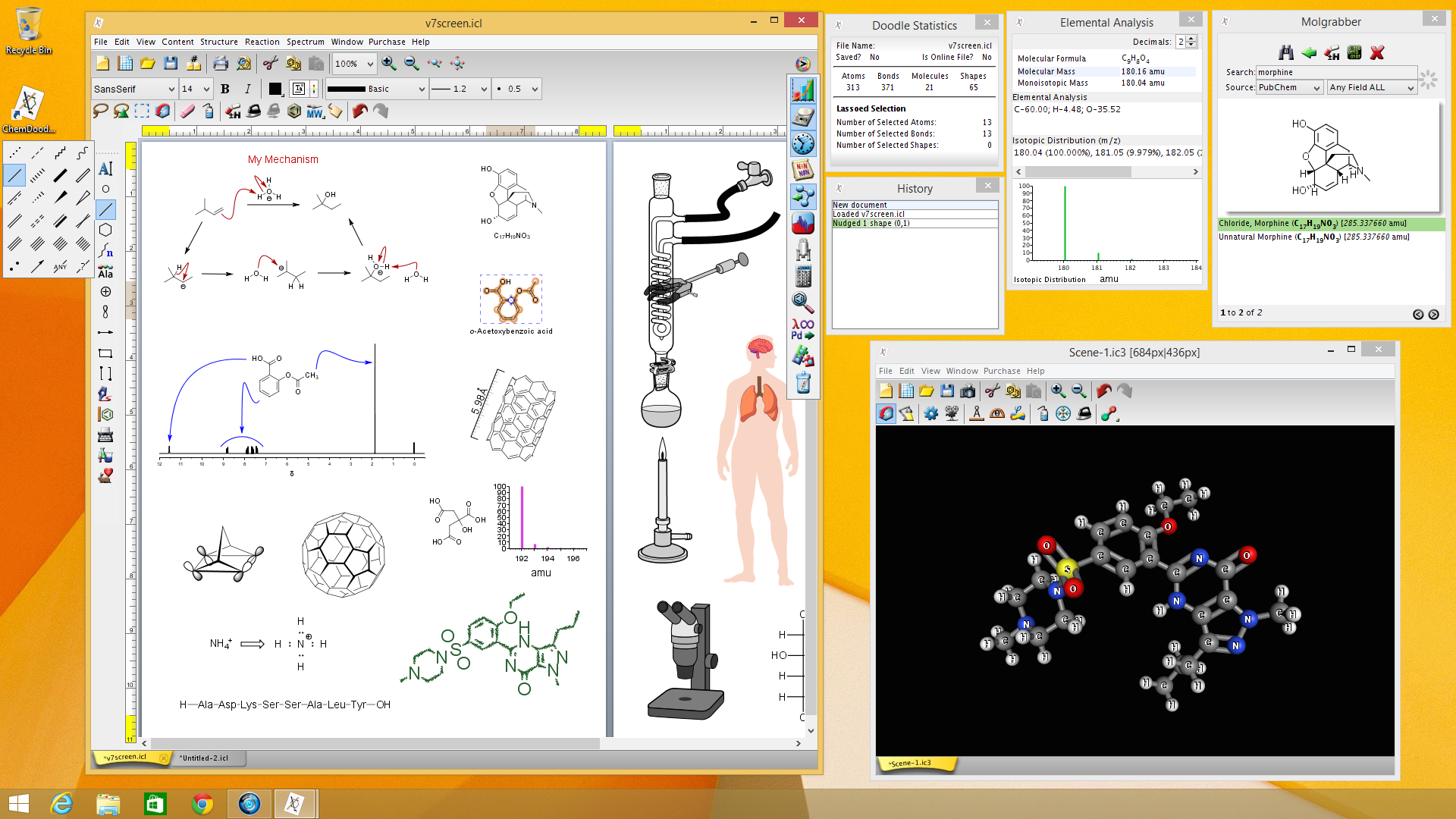

Tools The Tools menu contains several utility functions which are listed below. Currently, three big databases are supported: 1. This will perform a more extensive search on the selected database.

You can also click on the dropdown button next to the search field to select a specific database. Just type what you are looking for and a list of available molecules will appear. Finding structures You can load molecules from large databases like PubChem and RCSB using the search form located on the left side of the menu-bar. You can use the element to create new atoms or modify existing atoms.
#Chemdoodle uiuc full#
Each tool has different behavior for the right mouse button: Drag: move the entire molecule (you can already use the left mouse button for this) Rectangle select: select atoms and bonds using a rectangular selection area Lasso select: select atoms and bonds by drawing a freehand selection area Color mode: display atoms and bonds using colors Full mode: displays all C and H atoms instead of skeleton display Center: centers the whole molecule Clean: cleans the structural formula using an external service 2D to 3D: converts the structural formula into a 3D model 2ģ Left toolbar Bonds: pick one of the bond types (single, double, triple, up, down) and add or modify bonds Fragments: pick one of the fragments (benzene, cyclopropane, etc.) and add fragments Chain: create a chain of carbon atoms Charge: increment (+) or decrement (-) the charge of atoms Right toolbar In this toolbar you can select from a number of elements, you can also pick an element from the periodic table using the last button. You can delete the selection using the DEL key or using the eraser tool. If you have selected a separate fragment, you can rotate it by dragging an atom in the selection. You can add/remove atoms and bonds to the selection by clicking them. Top toolbar Trash: clear the entire canvas Eraser: erase atoms, bonds or the current selection Undo/redo: undo or redo your recent changes Selection tools: all these tool can be used to drag the current selection or individual atoms and bonds. Once you ve drawn a molecule, you can click the 2D to 3D button to convert the molecule into a 3D model which is then displayed in the viewer.

The structural formula editor is surround by three toolbars which contain the tools you can use in the editor. Drawing structural formulas MolView consists of two main parts, a structural formula editor and a 3D model viewer. Drawing structural formulas.2 Top toolbar.2 Left toolbar.3 Right toolbar Finding structures Tools.5 Link.5 Export.5 Information card.5 Spectroscopy.5 3D model resource.5 Advanced search Spectroscopy.7 Export data D model.8 Reset.8 Representation.8 Background.8 Engines.8 Model transformation.9 Crystallography.9 Fog and clipping Protein display.10 Show bio assembly.10 Chain representation.10 Chain coloring Advanced Jmol tools.11 Clear.11 High Quality.11 Calculations.11 MeasurementĢ 1.
#Chemdoodle uiuc manual#
1 MolView manual This is the manual for MolView version 2.4 MolView is a free web application hosted on You can contact if you have any questions Table of Contents 1.


 0 kommentar(er)
0 kommentar(er)
